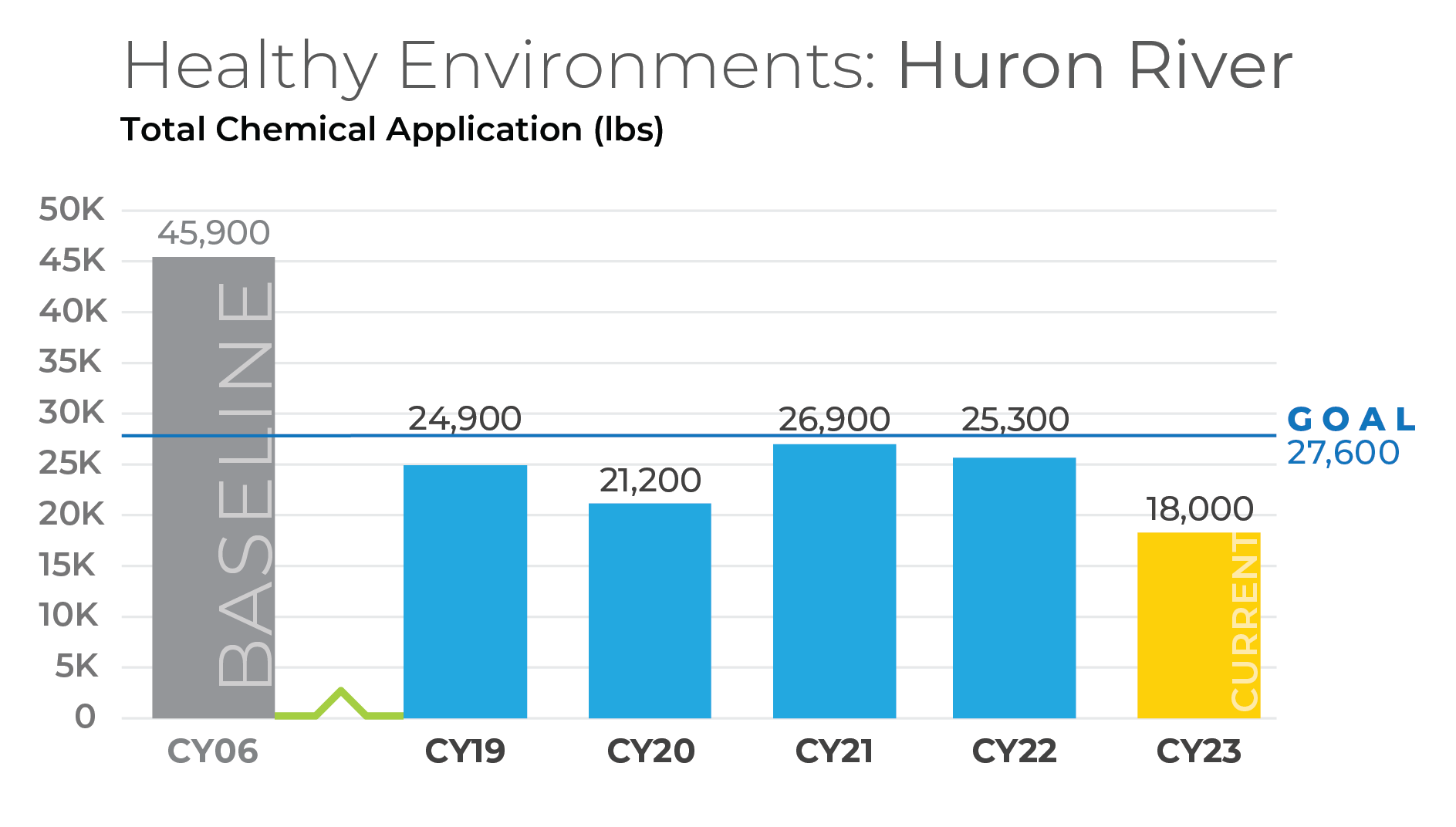
Recent Wins – 2024 Highlights
F&O Grounds Services partnered with LSA to convert 15,000 sq ft of turf to a high-visibility pollinator garden outside the LSI building.
New Goals!
Throughout 2024, The Office of Campus Sustainability convened a workstream of campus operational staff, faculty and primary stakeholders to review the 2025 Huron River Protection Goal and recommend expanded goals to promote resilient grounds and water protection. The workstream conducted data review, peer review, and numerous workshops to identify and prioritize potential new targets, metrics and implementation strategies. The new goals were shared with the campus staff, students, and faculty, as well as the broader community, through presentations and town halls.
Proposed Resilient Grounds Goals and Targets
Chemical Reduction
- Reduce active ingredients of synthetic chemicals by 70% from the 2006 baseline by 2030.
- With future development aligned with the campus plan, maintain at least 75% of green space in the greater Ann Arbor campus area as naturalized and/or sustainable.
- Eliminate the use of neonicotinoids and 2-4D by 2030 with the exception of treating noxious weeds, invasive plants, and pests.
Biodiversity
- Conduct a campus-wide inventory and gap analysis of existing and desired ecosystem GIS layers, unify existing layers, and address low-hanging fruit to fill gaps to reflect priorities and values in alignment with an ecosystem/habitat index by 2026.
- Conduct a comprehensive ecosystem assessment, including:
- Assess and map ecological services and natural features in accordance with identified index.
- Establish metrics to assess change over time of key and foundational ecosystem indicators.
- Develop a process for index and maps to serve as spatial strategic planning tools for campus plan.
- Utilize the resulting information to pursue more progressive and effective conservation planning.
- Develop S.M.A.R.T. goal(s) by 2027.
Land Use / Stormwater
- Increase the resiliency of campus greenspace and infrastructure by prioritizing compact development and preserving and/or restoring habitat and ecosystem services.
- Implement campus-as-lab project(s) to test stormwater management strategies and measure co-benefits in alignment with the Campus 2050 Plan and coordination with campus sub-area plans.
- Establish more nuanced stormwater goals (hyper-locally-based) by 2027.
Other
- Raise the visibility of sustainable grounds and stormwater projects on campus.
- Ongoing, proactive engagement of academic and research partners to increase campus-as-lab opportunities.
- Increase and track institutional support for natural area stewardship, e.g. funding sources, volunteer base, integration with curriculum, etc.
Workstream Partners
- F&O Grounds Services
- Matthaei Botanical Gardens and Nichols Arboretum
- Athletics
- U-M Golf Course and Radrick Golf Course
- Recreational Sports
- Campus planning and stormwater staff
- Faculty from the School for Environment and Sustainability, College of Engineering, and Taubman College of Architecture and Urban Planning
Efforts Supporting
Resilient Grounds
- Sustainable land management methods and guidelines
- Sustainable grounds management – Pollinator corridors, prescribed burns, goats, and more!
- Stormwater management program
- Stormwater management highlights
- North Campus Woods Conservation Program (volunteer opportunity!)
- Pilot of synthetic-chemical-free zone encompassing Central Campus Diag, relying heavily on manual weed removal and organic products
- Natural Area Specialist position in F&O Grounds Services
Recognition
Resources
2025 Goal Background
The 2025 Huron River protection goal, established in 2011, was to reduce chemical applications to Ann Arbor campus landscapes by 40% by 2025. We’re pleased to report that through the actions of many partners, this goal was achieved in 2019 — six years ahead of schedule.



